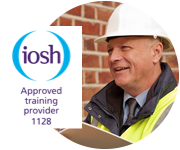Safety Training
Aims:
Delivered remotely through a digital platform, this 4/5 day 6 hour course is interactive, participative and equips the learner with the knowledge & skills required to manage safety health & environmental issues in a construction environment
The learner will understand:
- the unique issues to be managed in the construction industry to protect employees, contractors, neighbours and others
- aspects of successful health and safety management.
Course Content:
Local Legislation
The learner will understand:
– the basics of law – the legal duties of the employer, self-employed and employees in the prevention of accidents – the powers and enforcement options of the local health and safety enforcement bodies – the benefits of putting a robust health and safety policy in place – the requirements for the provision of information, training and instruction – the main provisions of the Safety Health & welface at Work Act 2005
Preparing for work
– general management of the site, workers and contractors
The learner will understand:
– the principles of good leadership, management and employee consultation, engagement and influencing behaviour – why good site inductions and communication are critical in ensuring a site remains safe – the importance of competent, trained site personnel – the importance of toolbox talks to convey / reinforce health and safety messages – the importance of risk assessments and the development process – PPE / RPE requirements – typical signage and its significance – the importance of method statements – the use of permits to work – typical emergency scenarios and procedures for dealing with these – the importance of drills and tests – requirements for site first-aid arrangements – key considerations for managing fire hazards – responsibilities for managing fire risks – the importance of managing environmental aspects and impacts related to construction projects – a range of local and global environmental impacts – the main environmental elements to be protected and the actions to be taken in order to achieve this – common ecological issues pertaining to construction sites and the management arrangements required – causes of nuisance and measures to mitigate nuisance – how land can become contaminated and the actions required to manage work on contaminated ground – the pollution pathway, causes of pollution and prevention measures – different types of waste – the waste control hierarchy and how to manage waste control documentation and processes.
Setting up the site
The learner will understand:
– site requirements for the welfare of construction workers on site – management of plant and equipment, including mobile plant – the importance of segregating vehicles and pedestrians and maintaining a safe site – the hazards and controls for slips, trips and falls – the key elements of setting out a construction site.
Construction phase health and safety
The learner will understand:
– legal and procedural issues associated with the management of lifting operations – how to manage lifting operations safely – inspection regime for lifting equipment – excavation risks – control and management of excavation work – control and management of confined spaces – rescue procedures from confined spaces – control and management of fixed electrical systems and electrical equipment on site – emergency procedures for electrical incidents – the control of the management of overhead and underground services – the control of the management of temporary works – management of mobile, lone and out-of-hours workers – the key issues and control of working at height including: -plans and risk assessments -roofs and fragile surfaces -common access equipment -working platforms and ladders -management, use and stability of scaffolds -fall arrest and suspension equipment – the hazards and risks of work equipment, including mobile plant and machinery, and the methods to control use of these – the key issues and controls associated with mental health – hazards, risks and control of asbestos – hazards, risks and control of lead – hazards, risks and control of noise – hazards, risks and control of vibration – hazards, risks and control of manual handling activities – hazards, risks and control of hazardous substances – hazards, risks and identification of drug and alcohol problems in the workplace – the importance of measuring, monitoring and reporting health and safety performance in the workplace – the use of information to demonstrate that health and safety is being managed effectively – factors to consider when building and preparing for an inspection.
Accidents
The learner will understand:
– why accidents occur, through investigation of root causes – human factors and their role in accidents – the reporting of accidents and incidents and how this can be used to identify trends in the workplace – how to identify and implement corrective actions.
Course Duration
5 days 6 hrs per dayNumber of Delegates
12Certification
Delegates will receive an IOSH certificate upon successful completion.


